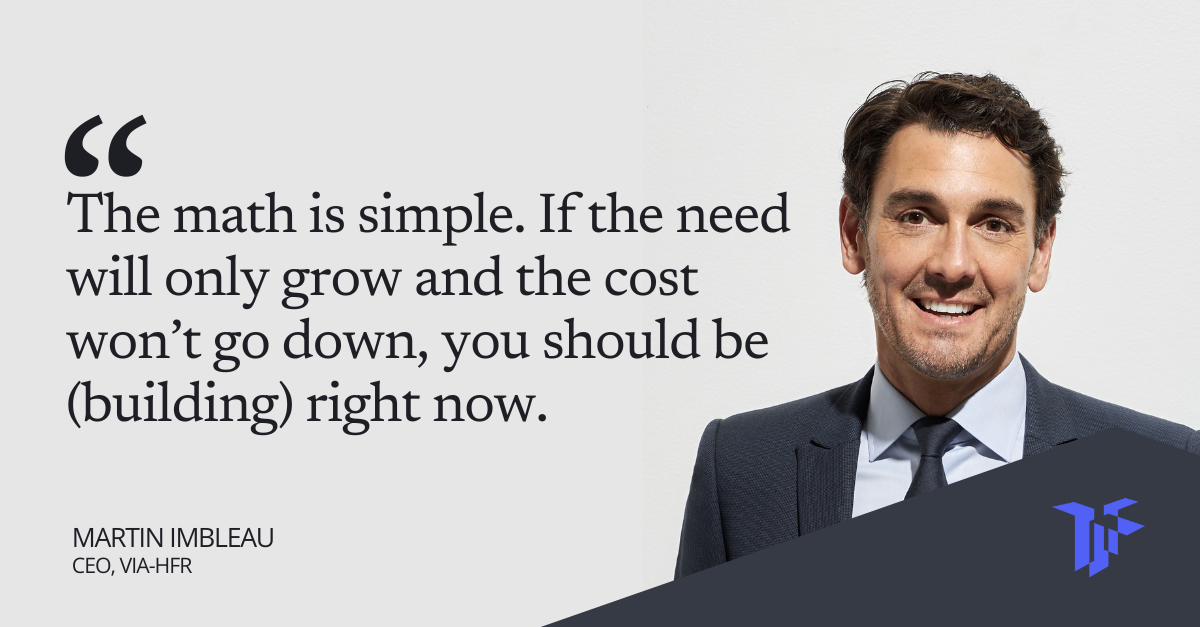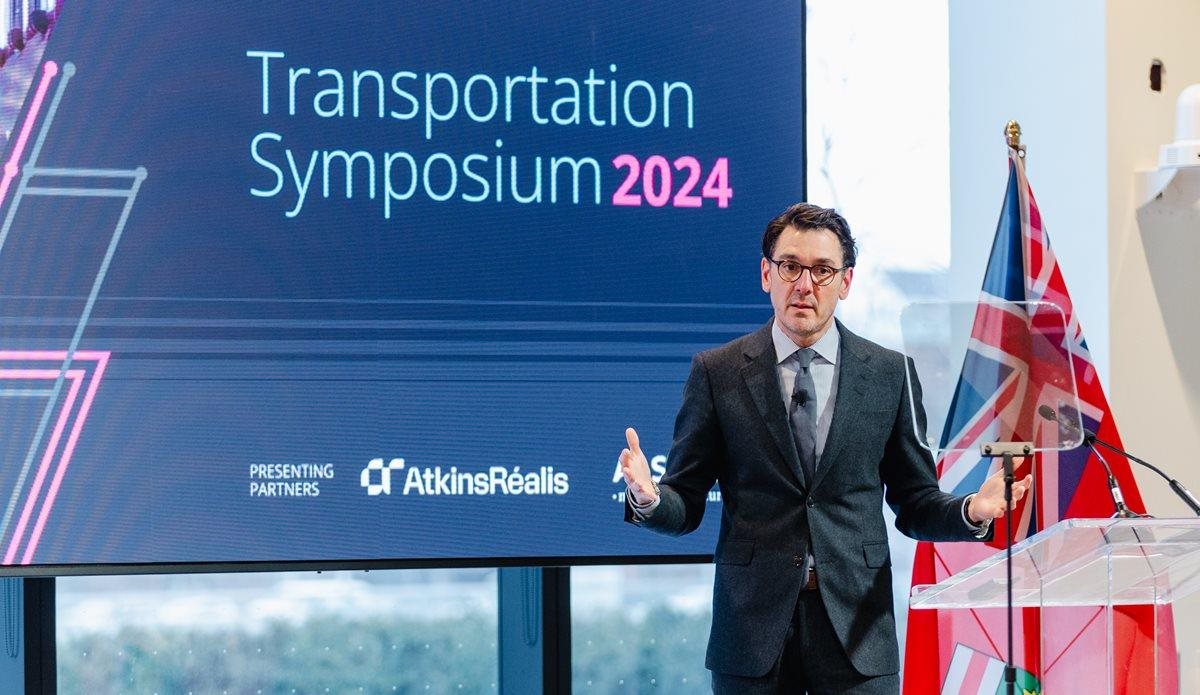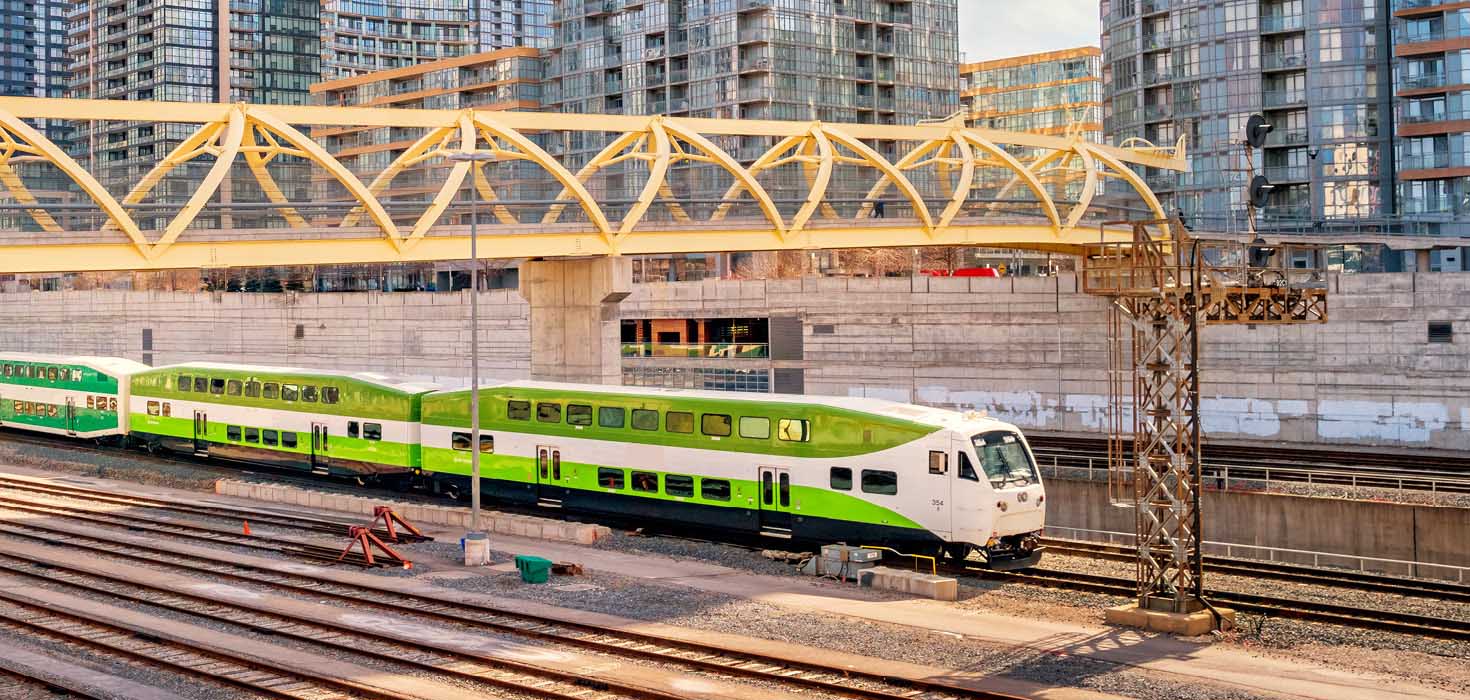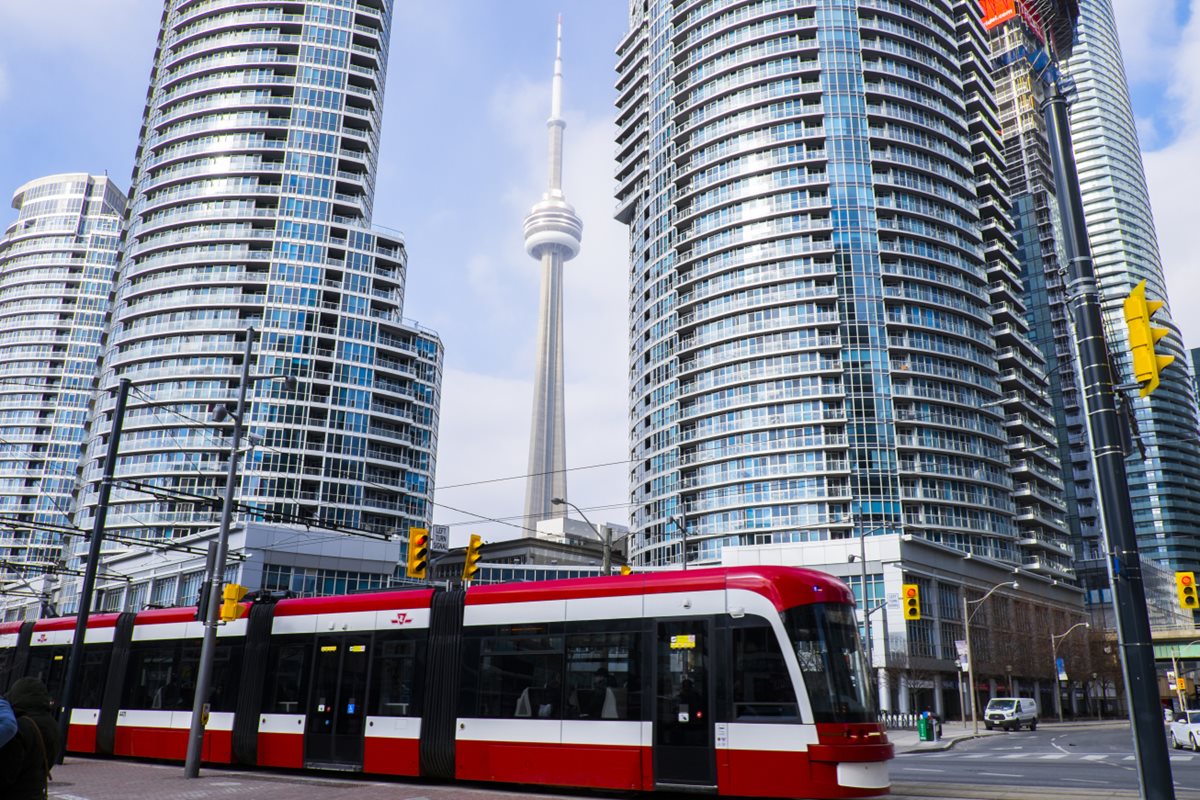Imagine hopping on a train in Toronto and arriving two hours later in Montreal. Does this sound too good to be true? Well, in the coming years, this commuter’s dream will become a reality. It’s all thanks to an exciting new project being led by VIA HFR. The objective: to build a high-speed passenger rail service between Quebec City and Toronto.
Details of the 1,000km transportation link were unveiled at our recent Transportation Symposium titled "Are We There Yet?" The project is currently in the planning phase right with developers working on proposals that would see trains run at speeds of 200km/h or faster.
There has been talk of a project like this for decades. However, this latest iteration has momentum. To learn more about the plan and how we’ll avoid past disappointments, we sat down with Martin Imbleau, CEO of VIA-HFR.
Martin, thanks so much for the time and for being a part of our 9th annual Transportation Symposium. I want to begin by asking, what is the biggest obstacle facing VIA HFR as you undertake this project?
Martin Imbleau: I think the biggest obstacle is probably behind us because this project should have been done in the past and now this project is well underway. We have a super process. We're embarking on a process with the private sector. We'll select a partner by next fall and then we will start the development phase. Of course, I understand why there’s skepticism. It’s understandable because as I said this project should have been done before. But, it's about time that we do it and I think the patience aspect of it will be the riskiest aspect. Let's take our time initially to build it fast. So often with large linear projects we do the reverse. We want to be too fast, throw numbers and dates out too soon, and this is how we screw up big projects.
Well, that leads me to my next question. There’s this fantastic podcast about The Big Dig in Boston.
MI: Yeah, I listened to the Big Dig. It’s an incredible podcast.
It really is! The theme of the podcast centers around the dangers of overpromising. What's your takeaway from that podcast as you oversee this high-speed rail project across Ontario and Quebec?
MI: Well, if you remember when the Big Dig Podcast starts with a story about how Boston should have been built decades before. And actually, one of the person being interviewed was around the project for like 30 or 40 years. But, today no one complaints about the Big Dig because it's in service. It's a super efficient highway.
We must learn from this project. The way to do big projects comes down to people. It's about communication, it's about establishing the specs and doing these things in the right order.
With this high-speed rail project, we have three phases we’ll go through.
Right now, we’re in the request for proposal phase. We will pick a partner to work with and then we will go below the radar for a few years to establish the parameters, the scope of this project, and the cost. Then, we will start construction probably in four or five years after having the support of the contractor and communities. We want Indigenous communities to become partners. We have the time to do it well and we need to make time to do this well.

This sounds ideal, but so many people, reporters included, want to know from the beginning: how much is this going to cost? And when will it start operating? How do you avoid giving in to those questions right now?
MI: I've done large linear projects all my life. They are difficult because your situation changes basically every five or ten kilometers. So, how can you throw numbers without having done your homework with all the communities and knowing what the land looks like? There's only one recipe, spend wisely and take your time in the development phase, advance your engineering to a significant level and then present your numbers in terms of schedule, scope and cost. Your rule of thumbs of yesterday won't, won't, won't be the ones of tomorrow. We also need to remember, this is a public service, so this is not a service that will be profitable in and of itself.
Right now, there are less than five million people using rail between the Toronto and Quebec City corridor. With our new high-speed, electric, dedicated, fast and reliable service, we think 25-million people will use the train in this same corridor. So, it's time we do it.

Those are huge numbers. Let’s talk about what a shift like that will mean for the economy?
MI: This corridor represents 60% of the population of the country and 40% of its GDP. So, it's obvious that we have the density and we have the requirement to build this project now and for the future generations. There are more than 30 colleges and universities along the corridor and 700,000 students. Many of those students don’t own cars and fewer will own them in the future. They also don't have the money to jump on a plane. They need a fast train service to commute and have more exchanges between their home communities.
What's the cost of not building this project?
MI: If we don't do it now, first we will regret it. And I'm 100% sure that if we don't do it in five or seven years, we will say to ourselves, gee, we should have done it in 2024. So, not build it will cost productivity, more congestion, and of course the environmental cost. The math is simple: if the requirement or the need will only grow and the cost will not go down, you should be doing it right now.
This has been incredibly insightful, before we go, is there anything else you wanted to add?
I do have a last message. We're building a project, but we're also building team. I need people in Toronto and Quebec and Montreal and Ottawa. So if you have the right skills and you have the patience to develop this project for the next generations, I'm looking for talent. Apply now!
Thank you to our Transportation Symposium partners.



